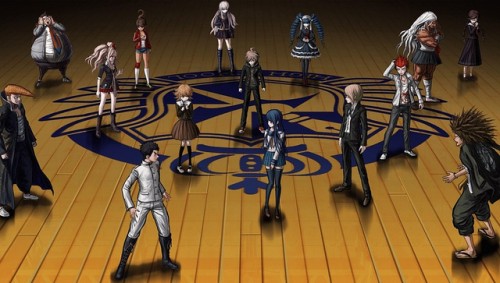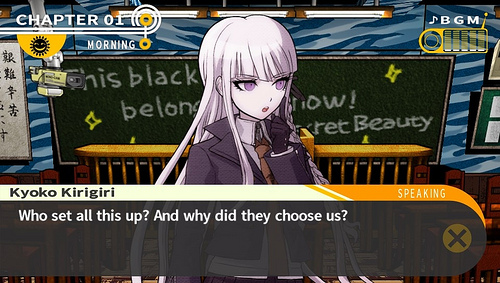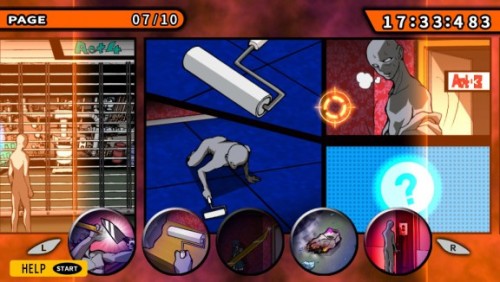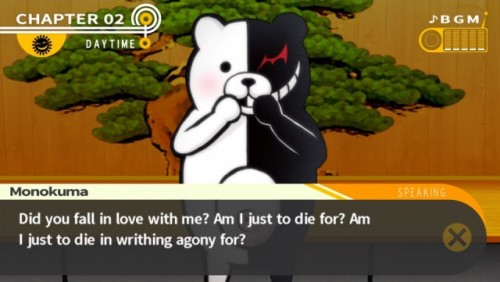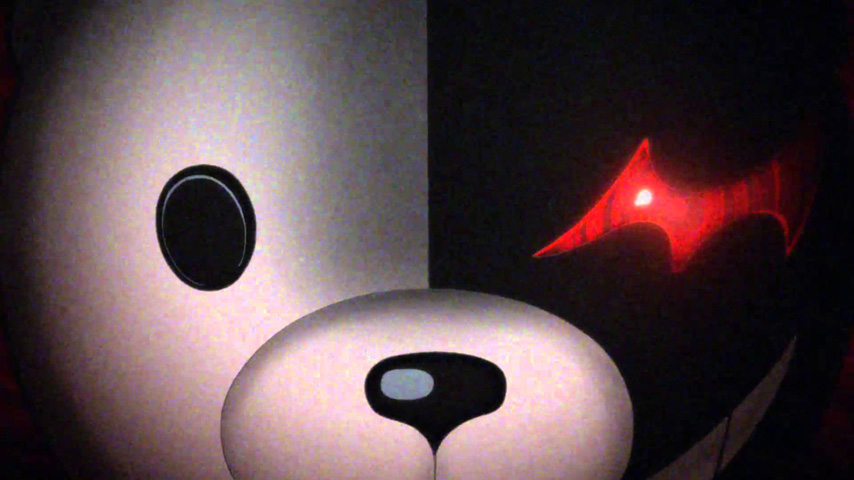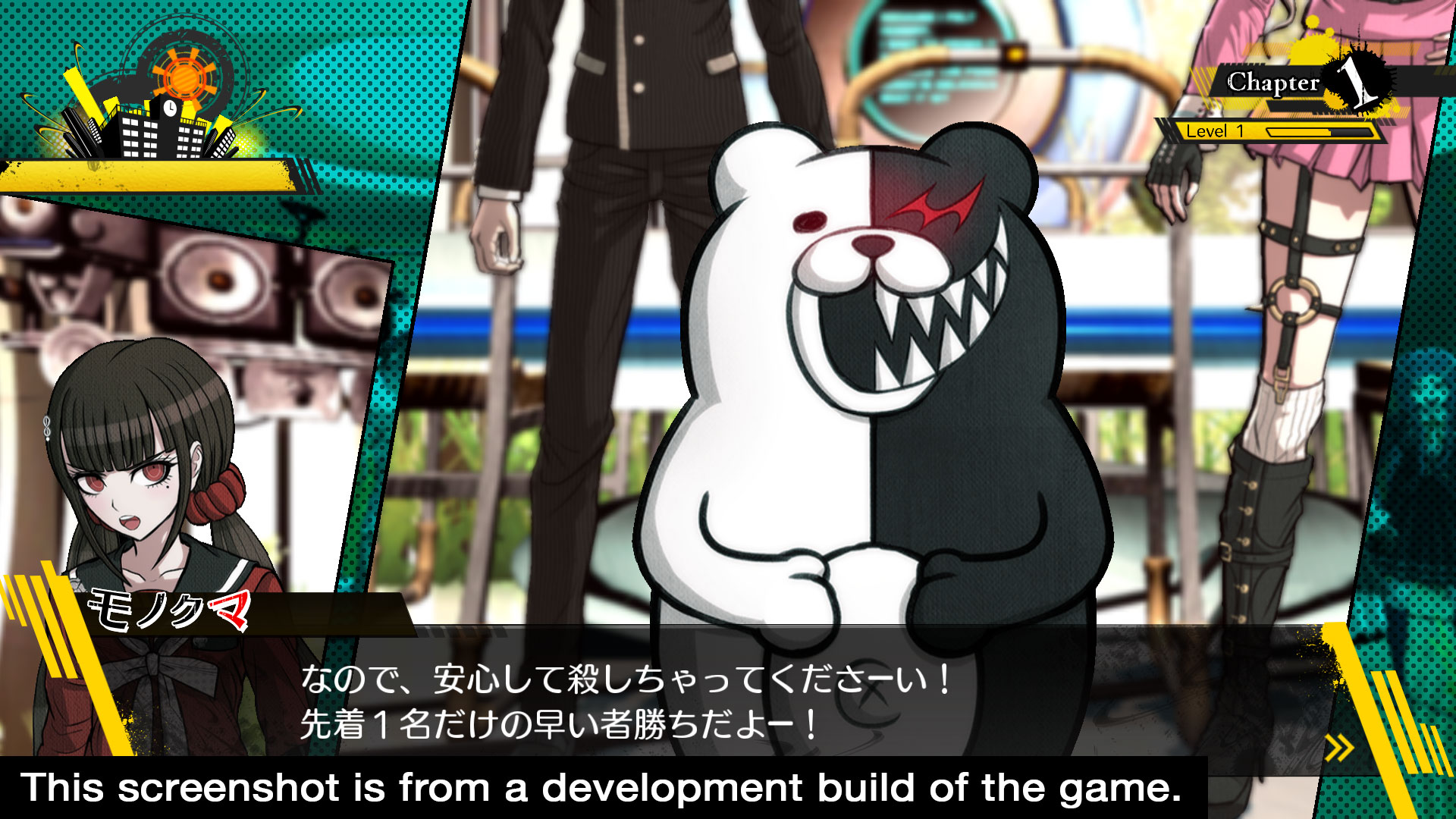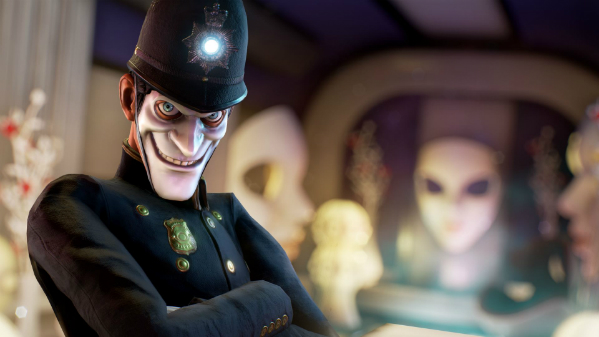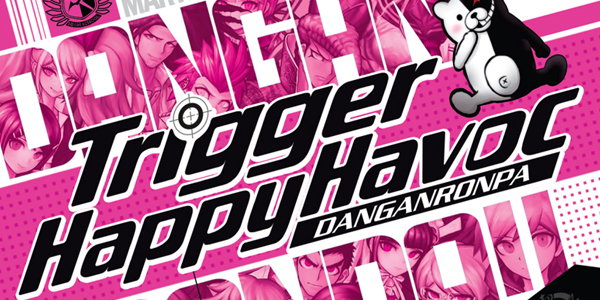
What would you do if you were trapped in a school with a group of people? Your first instinct might be to band together to find a way out. But if it came to it, would you murder someone for your chance at freedom? This is the plot of Trigger Happy Havoc: Danganronpa, a game first released in Japan in 2010. It’s taken a few years, but the game has now reached Western shores, ready to be experienced by those who love murder mystery stories, visual novels and logic puzzles. As a combination of all three, Danganronpa is a real treat.
You take the role of Makoto Naegi, a student chosen against all odds to study at the prestigious Hope’s Peak academy alongside other students who are the ‘Ultimate’ in their field. We’re not just talking about the Ultimate Programmer or the Ultimate Baseball Star though – in typical, quirky Japanese game style, the roster of Ultimate students also includes the Ultimate Biker Gang Leader and the Ultimate Moral Compass, amongst many others. The group of 15 finds itself imprisoned within Hope’s Peak by the sadistic headmaster/bear mascot Monokuma, who tells them they will be held there for the rest of their lives… unless they can get away with murder. In the interest of a sick, twisted version of fairness, once a murder has occurred, a class trial is held, during which the characters must figure out whodunnit. The price for accusing the wrong person is however, pretty steep, with the true murderer allowed to waltz out of Hope’s Peak alive while the other students are executed. This reality (not to mention Monokuma’s ‘motivational’ methods) is a source of conflict, mindgames and psychological torment between the characters and it’s all executed (no pun intended) very well. As a visual novel, Danganronpa‘s story is understandably its strongest point and is one that never lets up on its twists and turns. The cast of endearing characters also brings it to life, but as tough as it is, it’s best not to get too attached – after all, anyone could die!
Each chapter is divided up into Daily Life and Deadly Life. Daily Life has you exploring the school and living out each day until the story eventually progresses. During these periods you can choose to spend time with your classmates, which not only develop their lively personalities further, but also results in some relatively light-hearted scenarios in any otherwise gloomy setting. You’ll also occasionally unlock passive skills to be used during class trials, with effects like having more Influence (health) at the beginning of every trial. Deadly Life begins when a murder has occurred and is when you’ll have an opportunity to investigate the crime scene and any other relevant areas. Thankfully, there’s no pixel hunting here – tapping the Triangle button allows you to see all the hotspots in the room, making it quick and easy to check out the areas you need to. You’ll also need to interrogate other students before proceeding to the class trial.
The class trial itself is an interesting beast, and is comprised of four different types of gameplay (aside from the occasions when you are asked a multiple choice question or have to present a piece of evidence). The meat of the trial is the Nonstop Debate, when characters will discuss their thoughts on a certain topic in real-time, with weak points in their statements highlighted in yellow. Unearthing contradictions is, unusually, very shooter-esque, and requires you to use the right Truth Bullet (evidence) on the right statement. It’s not enough to use the right evidence during the appropriate statement; just like a shooter, your aim must be true. Chatter from other students will also fly across the screen during statements, which absorb bullets and that you must shoot down before you can successfully present evidence. Truth Bullets are pre-loaded for you, giving you a good idea of what contradictions to look out for. This can make the game a tad easy, but as the game progresses, you’ll have to cycle between bullets and occasionally have to use other people’s statements to drag the truth out.
Another segment of the class trials is the Hangman’s Gambit, a rather pointless minigame in which you’ll have to complete a phrase or word by shooting down letters. These often present little challenge as by the time they surface, you’ll have a clear idea of what direction the trial is heading in. A bit more interesting is Bullet Time Battle, a rhythm minigame where you have to shoot down characters’ ramblings in time with the beat. It gets more challenging as the tempo increases and as you have to reload, and ends once you’ve reduced your opponent’s health and fired that magic bullet of reason. By far the coolest part of the class trials however is Closing Argument, when you have to piece the sequence of events leading up to the murder together in the form of a comic strip. The art style during these segments is rough but incredibly stylish, although some of the panels you have to choose from are quite vaguely drawn.
Even if you miss, need some time to process the game’s logic, or continually make the wrong accusations, Danganronpa is very forgiving. You’ll often need to run through sections a few times before hitting the sweet spot, and though the game does give you a limited amount of time to find the contradiction, it is extremely generous, so there’s no real sense of urgency that the game was obviously aiming for. Moreover, if you’re stuck, Makoto will think to himself and give some very obvious hints about what evidence needs to be presented. Finally, and perhaps most outrageously, running out of Influence does not end in a game over or a gruesome execution after a false accusation. Rather, you’re simply asked you if you’d like to try again. Unfortunately, these factors remove a lot of the tension and challenge of the game, although the class trials are a lot of fun to play through.
Although its difficulty leaves a bit to be desired, there’s no denying that Danganronpa is excellent both visually and audibly. Environments have a 2.5D ‘paper’ effect with objects in rooms popping and folding outwards whenever you enter a room, while characters stand flat and 2D like paper dolls against the depth of the area. Even the murder scenes have flair to them, with blood represented in bright pink splotches, giving a funky contrast to the gruesome subject material. The colourful cast of characters is brought to life by great voice acting (some more superb than others), and the psychopathic Monokuma is one of the best villains in recent video game history. The music by industry veteran Masafumi Takada (killer7, God Hand) is also memorable, catchy and very fitting to the moody and foreboding atmosphere of the game.
Overall, Trigger Happy Havoc: Danganronpa is a slick murder mystery that will keep you on the edge of your seat. Although its low difficulty lets it down a little, its strong cast, awesome villain, mash-up of genres and gripping story all work in its favour to deliver one of the finest visual novel experiences that has ever been exported to the West.
Gripping story | Tense gameplay | Great cast | Slick visuals and audio
Too much hand-holding | Hangman's Gambits are pointless

